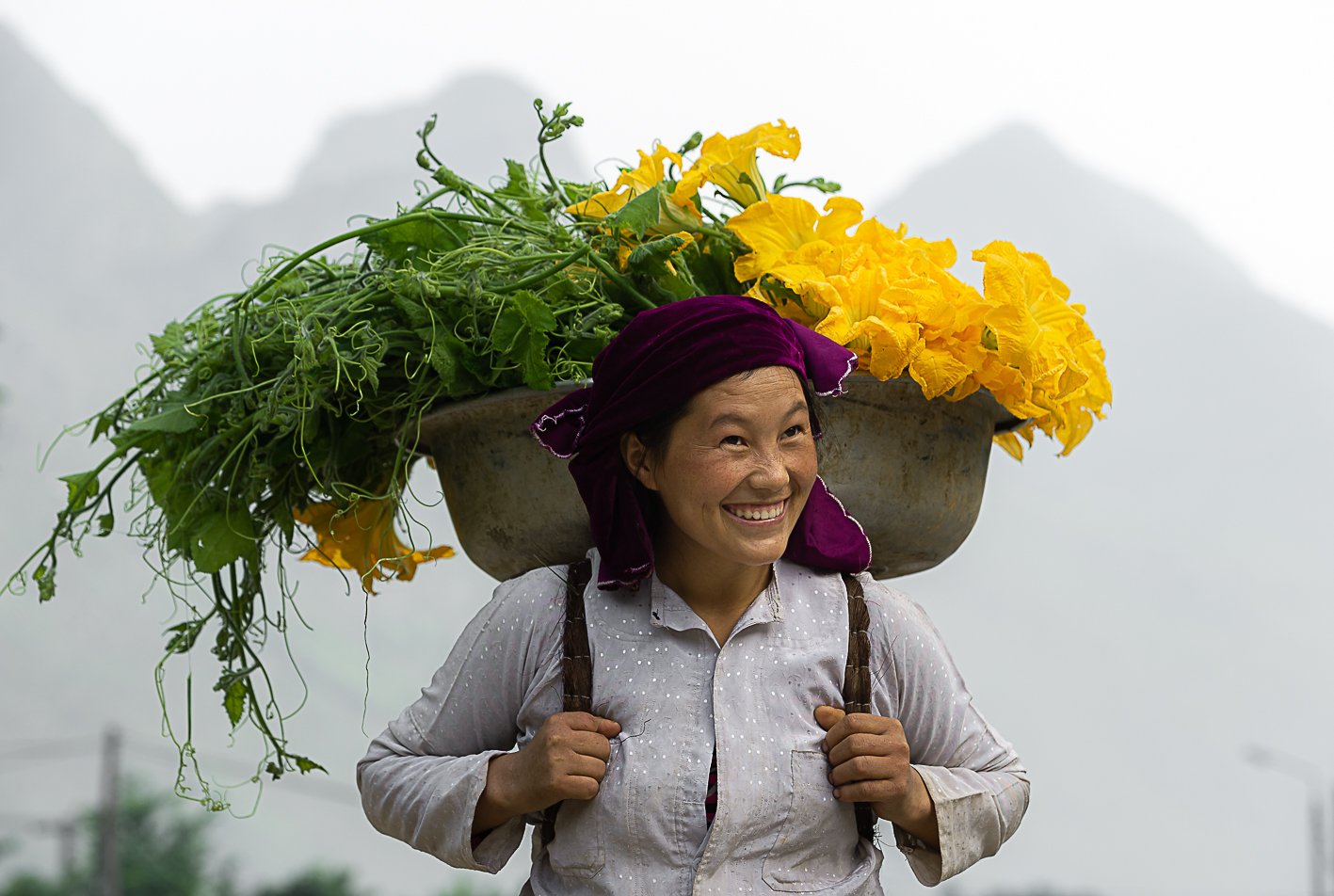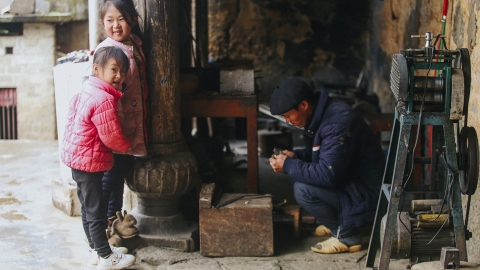In the summer of 2021, lying in a field hospital when Ho Chi Minh City became the epicenter of the pandemic, photographer Tran Cao Bao Long thought that if he were still alive, he would use the photos he had taken to help the children on the Stone Plateau.
After the pandemic passed, that thought still lingered in the photographer's mind for the following months. In the first half of 2022, he spent hundreds of days selecting his favorite photos from 2,000 taken over the past 20 years to organize an exhibition about highland markets.
Choosing the most satisfactory works from 2,000 photos is not easy, because each moment is a story, a different emotion for people and life; it is impossible to compare which photo is more beautiful, photographer Tran Cao Bao Long confided. “This makes me lose sleep. Late one night, I suddenly remembered a photo of a girl sleeping soundly in the middle of a bustling ancient market, so I had to search all night to find that photo to add to the collection.”
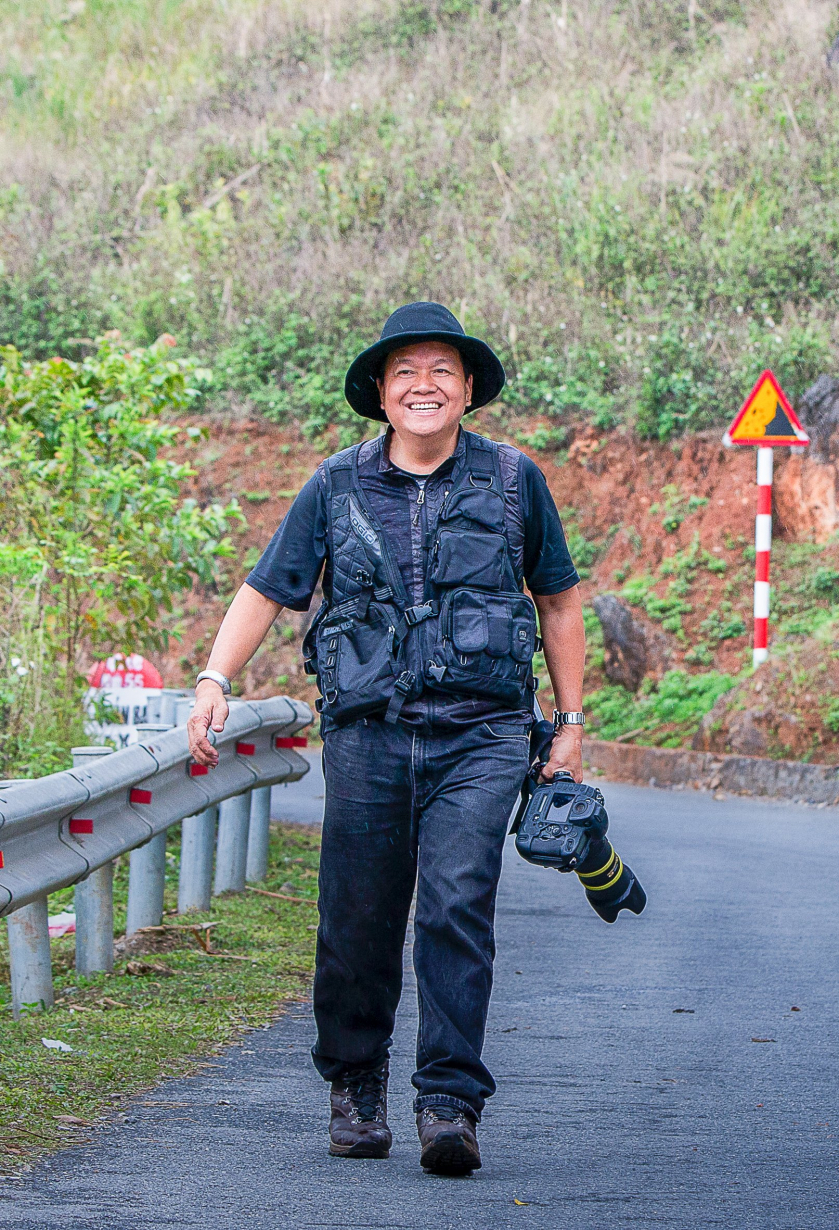
Artist Tran Cao Bao Long.
The happiness of a photographer is to capture beautiful moments in the flow of life. For Mr. Tran Cao Bao Long, happiness will be greater if it is given away. He wants to use his photos to bring joy to the people on the Stone Plateau. Not considering this as a great achievement, the author just wants the photo exhibition to be an "extended arm" to help improve the lives of children and the elderly in the highlands.
Market - Ha Giang cultural treasure
The photo series “Market on the Rock” realistically depicts the life of the highland people at markets in Ha Giang such as Dong Van, Meo Vac, Pho Cao, Sa Phin, Lung Cu, Ma Le… Some markets in Ha Giang are held every 6 days, one day later each week than the previous week instead of every 7 days. Therefore, every day in Ha Giang there are markets in different localities.
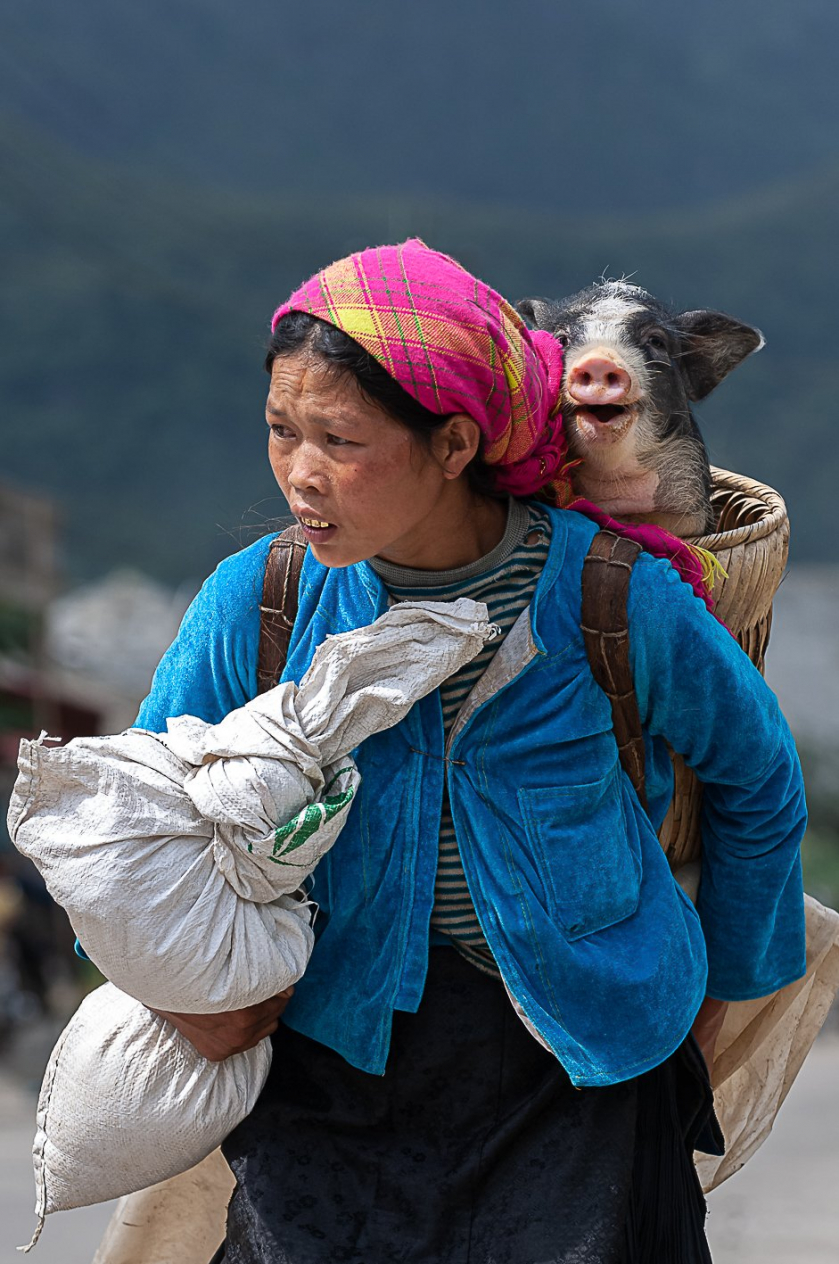
The market reflects the rustic life of the people in the Stone Plateau.
The market usually starts to get crowded at 6am. So, when it is still early in the morning, on the mountain passes, people lead horses, others carry chickens under their arms, and carry baskets of goods on their shoulders. To get to the market, people in many places have to travel a long distance, even overnight.
To capture the moments of market-goers at all three times - when they arrive at the market, when the market is in progress, and when they leave - photographer Tran Cao Bao Long said he had to start moving to the location before the sun had even risen.
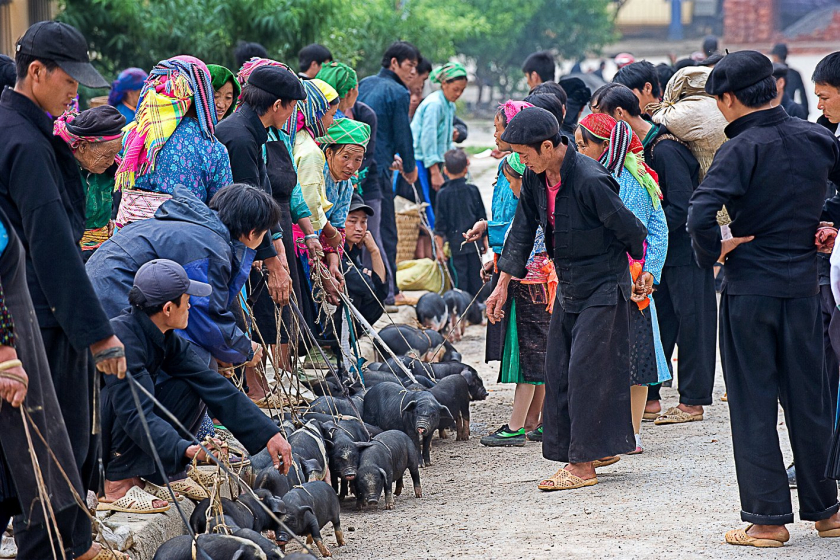
The market is where highlanders exchange and buy and sell local products.
People coming to the market are of all ages - from children to the elderly, from many ethnic groups - Giay, Lo Lo, H'Mong, Dao... They bring to the market local products such as livestock, handicrafts, brocade, medicine, tools... to exchange and sell. There are shouts, calls to each other, the sounds of pigs, chickens, and goats squealing loudly.
Going to the market, all the women wear the most colorful dresses and scarves. Men meet friends and drink corn wine until they are drunk. Children with red cheeks follow and play, chirping. The food court has sunlight filtering through the gaps in the honey-yellow corrugated iron roof, piercing the smoke rising from the pots of pho and thang co. The market is not only a place for buying and selling, but also a place for the people of the highlands to participate in cultural activities, meetings, confide, and exchange. The market is also a place where many young men and women meet and find partners.
Therefore, the market is considered an unmistakable "living museum" of culture, cuisine, and lifestyle of Ha Giang people.
“I like market activities because they reflect the simple, rustic life of the people here,” he said. “I am passionate about real life. In the market space, all activities often take place naturally, the atmosphere is cheerful, and people are less shy about camera lenses. The joy of the photographer is sometimes as simple as that,” the photographer added.

Pho Cao Market is located in Dong Van, Ha Giang.
Each photo in the collection of NSNA Tran Cao Bao Long shows a variety of activities and nuances of people coming to the market, clearly revealing the expressions on the characters' faces. To tell all the stories behind each photo is impossible in just one or two days. Mr. Tran Cao Bao Long said, once he encountered people from far away who had to travel all night, falling asleep at the market, only waking up when the market was about to close. There are photos capturing the smiles and shy looks of children waiting for their parents; a pig "smiling" when it was bought; or drunk H'Mong men after the market. All of these very "real" slices appear through the rustic lens of photographer Tran Cao Bao Long.
The most important thing in life photography is authenticity.
Flipping through each photo, Mr. Tran Cao Bao Long is like opening a travel diary of more than 20 years of holding the camera, leaving footprints all over the roads of the East - Northwest. Among the places he has been, the land of Ha Giang is a special memory space in the heart of the artist. The land at the head of the Fatherland makes many people overwhelmed by the rolling hills, but the simple life of the people is what leaves the deepest impression in the heart of the photographer from Ho Chi Minh City. Ha Giang is so familiar to the author that "every time I come to Ha Giang, it's like coming home", the artist said with a hearty laugh.

The market is considered a "living museum" of Ha Giang people.
Artist Tran Cao Bao Long cannot remember how many times he has come to this remote land. He only knows that each time, he often stays for a long time, sometimes a week, sometimes 1 to 2 months. During his "homecoming" times, photographer Tran Cao Bao Long wanders around the roads every day with the passion of bringing life into his photos. During his work, he has to wake up very early, following dangerous roads. Behind the beautiful photos is a not-so-glittering backstage.
“After each shot, each moment belongs to the past, never to be repeated, so it is very precious. Many babies in my photos when they were very young, when they grew up and had families, when they met again, they “showed off their children” to me. In some cases, I took wedding photos for both generations,” the photographer smiled as he talked about the sparkling joy of “collecting” moments on the land at the head of the Fatherland.

The market sells everything from livestock and poultry to handicrafts and fabrics.
Life naturally enters the photos of artist Tran Cao Bao Long. Real life is also his favorite photographic material. “Photos are a view of life. The most important thing when taking photos of life is to be real. When your heart is real, what you shoot with is no longer important,” artist Tran Cao Bao Long confided, “Maybe because I’m lazy, I don’t set up or edit the photos.”
According to Tran Cao Bao Long, reflecting “life as it is” seems easy but is not simple. Because to capture interesting moments requires a keen eye and patience to see the beauty in seemingly ordinary things. The life in the highlands in the photos of photographer Tran Cao Bao Long, although difficult, does not have a harsh color but is still full of optimism, joy and hope.
Some other pictures in the exhibition "Market on Rock":

"Food vendor" taken in November 2018.
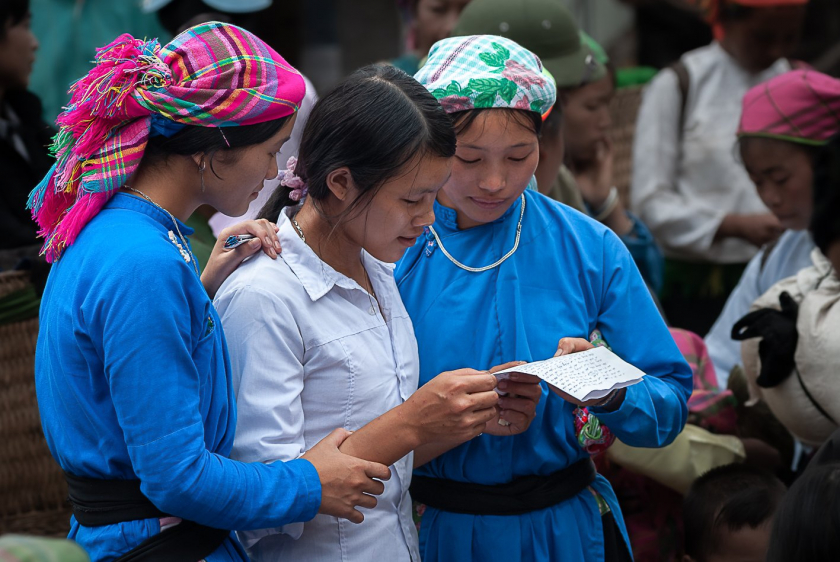
The market is also a place where men and women meet and find partners.







